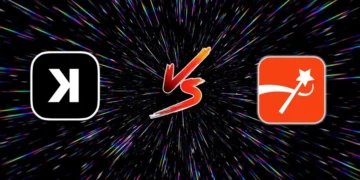The debate between proof of work (PoW) and proof of stake (PoS) has raged for years, but in 2025, it is more critical than ever. With Ethereum’s transition to PoS and growing worries about energy usage, investors and developers must ask, “Which mining algorithm is best for the future of blockchain?”
If you’re wondering whether proof-of-stake blockchain models will dominate or if Bitcoin’s proof-of-work model will remain king, this guide breaks down everything you need to know. We’ll compare energy efficiency, security, and scalability, and explore alternatives, such as Delegated Proof of Stake (DPoS) and Proof of Elapsed Time.
By the end, you’ll understand:
How PoW and PoS function
The pros and cons of each
Whether CPU mining will still be viable in 2025
Which consensus mechanism is truly better
Introduction: The Blockchain Consensus Dilemma
In 2025, the debate over proof of work (PoW) and proof of stake (PoS) remains at the heart of blockchain innovation. Amid growing concerns about energy consumption, scalability, and decentralization, users are asking: Which model delivers superior performance in today’s evolving crypto landscape?
As cryptocurrencies mature, so too do the mechanisms that secure them. Whether you’re mining Bitcoin using PoW, exploring Ethereum’s PoS, or deciding which mining algorithm is best for you, this article dives deep into both systems to help you determine which fits your goals and values.
Are you ready to explore whether proof-of-stake mining is more efficient than traditional methods like CPU mining in 2025?
What is proof of work (PoW)?
How does PoW work?
Proof of Work (PoW) is the original consensus mechanism used by Bitcoin and many other early cryptocurrencies. In this system, miners compete to solve complex mathematical puzzles. The first miner to solve a puzzle gets to add a new block to the blockchain and earns a reward.
However, this process requires massive computational power, raising concerns about energy consumption and environmental impact.
Key Features of PoW
✔ Decentralized security – Hard to attack due to high computational requirements.
✔ Battle-tested – Bitcoin’s proof-of-work has been secure since 2009.
✔ Fair distribution – Early miners had equal opportunities.
Examples of Proof of Work Blockchains
Bitcoin (BTC) – The most secure PoW blockchain.
Dogecoin (DOGE) – Originally a PoW meme coin, still using mining.
Litecoin (LTC) – A lighter version of Bitcoin’s PoW.
Pros and Cons of PoW
✅ Pros of PoW
Unmatched security – Extremely difficult to manipulate.
Decentralization – No single entity controls mining.
Proven reliability – Bitcoin’s proof-of-work remains unhacked.
❌ Cons of PoW
High energy consumption – Bitcoin mining uses more electricity than some countries.
E-waste – Obsolete mining hardware contributes to pollution.
Barrier to entry – CPU mining in 2025 is nearly impossible due to ASIC dominance.
What is Proof of Stake (PoS)?
How PoS Works
Unlike PoW, Proof of Stake (PoS) doesn’t require mining. Instead, validators are chosen based on the amount of cryptocurrency they “stake” as collateral.
Ethereum’s proof-of-stake transition (Ethereum 2.0) marked a major shift, reducing energy consumption by ~99.95%.
Key Features of PoS
✔ Energy-efficient – No need for power-hungry mining rigs.
✔ Faster transactions – Higher scalability than PoW.
✔ Lower entry barrier – No need for expensive hardware, just crypto stake.
Examples of Proof of Stake Blockchains
Ethereum (ETH) – Fully transitioned to PoS in 2022.
Cardano (ADA) – Uses a unique PoS model.
Solana (SOL) – High-speed PoS blockchain.
Pros and Cons of PoS
✅ Pros of PoS
Eco-friendly – Uses a fraction of PoW’s energy.
Scalable – Handles more transactions per second.
Accessible – Anyone can participate by staking crypto.
❌ Cons of PoS
Wealth concentration – Those with more coins have more power.
Less battle-tested – PoS security is still evolving.
Centralization risks – Large validators could dominate.
Proof of Stake vs Proof of Work: Key Differences
1. Energy Consumption
PoW: Extremely high (Bitcoin = ~127 TWh/year).
PoS: Minimal (Ethereum now uses ~0.01% of Bitcoin’s energy).
2. Network Security
PoW: More secure against 51% attacks (but costly).
PoS: Cheaper to attack, but slashing mechanisms punish malicious actors.
3. Scalability
PoW: Limited by block times (Bitcoin: ~7 TPS).
PoS: Much faster (Ethereum: ~100,000 TPS post-upgrades).
4. Environmental Impact
PoW: Heavy carbon footprint.
PoS: Nearly zero emissions.
5. Reward System
PoW: Miners earn block rewards + fees.
PoS: Validators earn fees + staking rewards.
PoW vs PoS: Future Outlook
With Ethereum’s proof-of-stake leading the charge, PoS is gaining dominance. However, Bitcoin’s proof-of-work remains unmatched in security.
Emerging Alternatives:
Delegated Proof of Stake (DPoS) – Faster but more centralized.
Proof of Elapsed Time (PoET) – Used in enterprise blockchains.
Which mining algorithm is best? It depends:
For security & decentralization → PoW
For speed & sustainability → PoS
FAQs
Is Proof of Stake or Proof of Work better?
It depends on your priorities. If energy efficiency and scalability matter most, go with Proof of Stake. If security and decentralization are key, many still prefer Proof of Work.
Is Proof of Stake the future?
Given the current trends, Proof of Stake appears to be the future for most new projects, especially those prioritizing sustainability and speed.
Which advantage does Proof of Stake offer over Proof of Work?
The primary advantage is energy efficiency. Proof of Stake mining doesn’t require massive computational power, reducing environmental impact.
Is XRP Proof of Work or Proof of Stake?
XRP uses the Ripple Protocol Consensus Algorithm (RPCA), not PoW or PoS. So, Is XRP Proof of Work or Proof of Stake? The answer is neither.
Is Proof of Stake better than Proof of Work?
Better is subjective. For many, Proof of Stake offers better scalability and eco-friendliness, while PoW provides historical trust and proven resilience.
What is the difference between PoS and PoB?
PoS relies on staking coins, while Proof of Burn (PoB) involves burning coins to gain mining rights. Each has unique trade-offs in terms of economics and decentralization.
Is Proof of Stake as secure as Proof of Work?
While Proof of Stake has shown promise, especially after Ethereum’s proof-of-stake transition, PoW remains the gold standard in security.
What is the primary advantage of Proof of Stake over Proof of Work?
The main advantage is lower energy consumption, making Proof of Stake mining a more sustainable choice for modern blockchains.
Is Ethereum a PoS or PoW?
Ethereum is now a Proof of Stake blockchain following its merge in September 2022.
What is a weakness of proof of work?
One major weakness is high energy consumption, contributing to environmental concerns and centralization through large mining pools.
Is Bitcoin PoS or PoW?
Bitcoin is a Proof of Work blockchain. So, Is Bitcoin proof of work? Yes, it uses Proof of Work Bitcoin mining to validate transactions.
Is XRP proof of work?
No, XRP does not use Proof of Work or Proof of Stake. It operates on its consensus mechanism.
Is Dogecoin proof of work?
Yes, Dogecoin uses Proof of Work. So, Is Dogecoin Proof of Work? Absolutely.
Conclusion
By 2025, your choice between Proof of Work and Proof of Stake will depend on your priorities.
- For security and decentralization, Proof of Work Bitcoin remains unmatched.
- For scalability, sustainability, and accessibility, Proof of Stake mining leads the way.
Whether you’re evaluating mining algorithms, exploring Ethereum’s proof-of-stake, or considering crypto staking opportunities, it’s crucial to understand these two consensus mechanisms.
So, what’s your stance? Are you team Proof of Work or leaning towards Proof of Stake?
Final Verdict
For sustainability & speed → Proof of Stake (PoS) wins.
For security & decentralization → Proof of Work (PoW) remains king.
The future may see hybrid models or new consensus mechanisms, but for now, both have their place.
What do you think? Will PoS overtake PoW? Share your thoughts below!






































